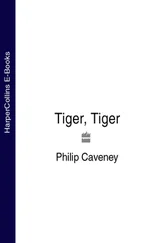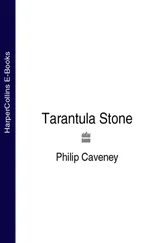Cave sediments
All kinds of sediments find their way into caves. Many arrive complete with their own specialist biotas: bacteria, fungi, nematodes, earthworms and so on, and these may be exploited by cavernicoles as a source of food. Cave sediments may also serve as a habitat for the eggs, larvae, or pupae of cavernicoles.
Moonmilk
Moonmilk is a term applied to white, wet, cheese-like or dry, sticky, powdery formless masses found in limestone caves. This weird stuff may contain a cocktail of carbonate minerals – including calcite, aragonite, monohydrocalcite, magnesite, hydromagnesite, nesquehonite and huntite – some of which are alledged to be associated with particular bacteria isolated from moonmilk. A blue-green alga Synechococcus elongatus found growing in moonmilk in complete darkness must have been using alternative metabolic pathways to the normal photosynthetic ones it employs in the light, and other algae ( Gleocapsa magna ) may also be present. I know of no cavernicolous animals associated with moonmilk, so this is not a habitat which I propose to discuss further in this book.
Submarine and intertidal cave habitats
The submarine Green Holes and intertidal Brown Holes of Doolin, in County Clare, are ordinary limestone caves, formed in the usual way, which became inundated by rising sea levels at the end of the last glacial period – about 12,000 BP No doubt they have had a long history of intermittent sub-aerial cave-development during cold glacial periods of low sea-stance, alternating with periods of immersion in sea-water during interglacial warm spells, such as the planet currently enjoys. They provide a significant habitat for marine life – Mermaid’s Hole has been explored for over a kilometre and the Hell complex totals several hundred metres. Other significant submarine caves occur in the Brixham area of Devon and at Durness in the far north of Scotland. Otter Hole, a resurgence cave which opens on to the banks of the river Wye near Chepstow, has a tidally-flushed entrance series which may contain fresh or saline water, depending on the height of the tide and the volume of the cave river. The faunas of such caves will be discussed in Chapter 5. In other countries, an interesting fauna has been found in coastal brackish groundwaters, but I know of no such British fauna. It may exist, but no studies have been made.
Submarine caves, such as the Green Holes, should not be confused with ‘sea caves’, such as the famous Fingal’s Cave in the Hebrides, which are spray-filled holes blasted out of cliffs by wave action. The latter may harbour a few ubiquitous, fast-moving cliff-dwellers such as sea slaters ( Ligia oceanica ) and silverfish ( Petrobius maritimus ), which can dive into cracks to escape the force of the waves, as well as a few of the more hardy marine organisms found in the more extensive drowned limestone caves referred to previously. In short, the fauna of sea caves is unremarkable.
Slutch caves
Slutch is the onomatopoeic term given by Wainwright to the peat bogs of Kinder Scout, Bleaklow and Black Hill in Derbyshire. Apparently, water flowing between the base of the peat and the underlying gritstone has carved out a number of caves of explorable dimensions – one of which has been followed for 50 m underground by cavers Steve Fowler and Tony Moult. It seems that the base of the peat is riddled with such caves and with smaller air- or waterfilled passages of mesocavernous dimensions. No doubt this will prove to be a widespread habitat in upland peat deposits throughout Britain and Ireland, perhaps with a characteristic fauna all its own, which for the moment appears to have escaped investigation.
Mines, tunnels, cellars and tombs
As artificial caves, such spaces may be inhabited or visited by any cavernicoles which have both the motive and the opportunity to do so. The motive will be a suitable medium/microclimate and food supply (see following sections). The opportunity will fall to any cavernicole whose habitat intersects the artificial cave.
Food supply
Chlorophyll and sunlight are the elements of life on earth and the source of that unique green glow which identifies our living planet when seen from space. Photosynthesis lies at the base of the food chains in which all life is meshed: fish, fowl and fungus; tree, turtle and tiger – or almost all.
In 1977, an American ship on an oceanographic survey south of the Galapagos Islands, located some active volcanic vents on the sea floor at a depth of 3 kilometres. An instrument pod was sent down, armed with video cameras to record the scene. As the probe moved towards the vents, the watching scientists were amazed to see their monitor screens fill with a writhing mass of enormous worms, 10 centimetres thick and up to three metres long. Close by were beds of 30 cm-long clams. Among them swam shoals of fish, and white crabs scuttled across the black basalt rocks. At these depths, far beyond the reach of sunlight, life is generally thin on the ground. A few starfish, crinoids and crustaceans subsist on the steady drizzle of detritus, and are in turn eaten by predatory fish. To find such an abundant local concentration of large organisms clearly pointed to an unusually rich food source. The mystery was soon solved. The volcanic vents, it seems, were spouting superheated, sulphurladen water. As this cooled, clouds of black sulphides formed and were immediately consumed by great concentrations of bacteria. The worms and the clams were feeding on these bacteria and they in turn supported the scavenging fish and crabs. The bacteria concerned are chemo-autotrophs – that is, they can harness the chemical energy in the volcanic sulphides to power their own vital processes. What is more, this whole process and the mini-ecosystem which revolves around the ‘volcanic bacteria’ is quite independent of sunlight.
Sulphur bacteria, and relatives which derive energy by reducing ferric iron compounds, are common in caves – in sediment banks as remote from solar rays as are the depths of the deepest ocean trench. The muds where they live are home to nematode worms, known bacteria-feeders, which are hunted by tiny, scurrying beetles. How many visitors, catching sight of a cave beetle, appreciate that they may be watching one of the rarest of all living phenomena – a predator sustained, at least in part, by a food chain independent of sunlight.
The energy source for cave-based chemosynthesis generally originates outside the cave, as Carboniferous Limestone itself contains very little in the way of iron and sulphur minerals. These compounds, and the bacteria which exploit them have usually been washed in as part of the cave’s sediment load. But there is at least one energy source which may originate within the fabric of the cave itself. Most limestones contain detectable amounts of organic matter, largely in the form of hydrocarbons. Such material would be of no use to animals directly, but if there are bacteria present which are capable of using it as an energy source, it could be continually liberated into the cave ecosystem at the interface between the cave and the rock, imperceptibly, as the cave is dissolved out by flowing water. Since the organic matter in the limestone will have been derived from organisms present in the seas when the rock was being laid down, its energy content must originally have come from the sun. It is in fact fossil solar energy.
Interesting though they may be as a scientific curiosity, chemo-autotrophic bacteria contribute only slightly to the food base of most cave communities. By far the biggest source of energy is still the sun’s rays, but at second-hand, in the form of introduced detritus from surface communities; for no green plants can survive in the absolute dark of the cave.
Читать дальше












